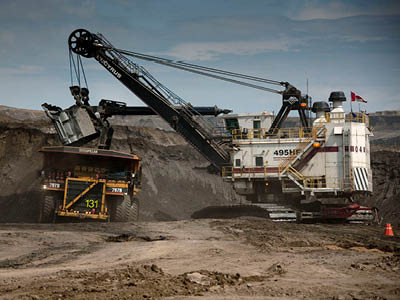Research Brief
Community development planning
Success and failure in the extractive sector
A central difficulty for extractive activity is that benefits accrue at the national level but disruptions are highly localized. Companies recognise that these imbalances need to be addressed and adopt active programmes to improve local benefits. These programmes have had mixed past success, partly because they are frequently top-down in design. Sustainable community development programmes that bring benefits over the long term need to be bottom-up — designed and implemented with participation of the local communities that they seek to benefit.
Extractives projects bring both benefits and disruptions. Most benefits accrue at a national level but disruptions are local. Companies address this through community development programmes focused on local areas
Many community development programmes have failed due to a top-down design process that leads to programmes which are not in line with communities’ needs
Participatory processes ensure that programmes are aligned with local needs, build local capacity, and are sustainable over the longer term
Carefully crafted, locally appropriate programmes, especially those led and initiated by the local community members themselves, can make positive contributions to improving the lives of local host communities
Past failures
The literature over the past decade on local and community development associated with extractive industries projects has followed a trajectory from discussions on corporate social responsibility (CSR) to a more recent focus on the social licence to operate (SLO). In most analyses of community development practices at the local level, writers have identified a lack of participation by local communities and their representatives as a stumbling block to success. Although participation in community development has been the subject of much debate in development analysis for over forty years, it has only emerged in the extractives sector over the last few years.
Reviews of community development programmes have frequently found a disconnect between local needs and community programmes. This is usually when programmes are driven with corporate imperatives in mind. This leads to programmes that are designed with little knowledge or understanding of the socio-cultural contexts of the people’s lives in which they operate and therefore have limited acceptance and success. In some cases, they can undermine community development by undermining local capacity for self-management. Sustainable community development needs to be based upon the greatest possible participation of the intended beneficiaries, including ‘weaker voices’ in the community and other actors such as local government. Otherwise, there is a real danger that programmes will not be sustainable nor even appreciated locally.
 Past successes
Past successes
Despite the significant level of criticism of company performance in the literature, there has been considerable effort by the mining and oil and gas industries to foster improved community development performance. Some projects have achieved good results. For example:
- In Lao PDR the Minerals and Metals Group sponsored a community participatory planning exercise across the greater project development area of its Sepon gold mine aimed specifically at encouraging community-led development initiatives. This had led to a reduction in inequality in mine-affected communities. As a result, the mine has high approval ratings in surveys of community satisfaction (over 80%).
- In Brazil, Vale increased community participation in the development of programme design at its Brucutu mine. The company tackled deteriorating community relations by increasing investment in dialogue rather than infrastructure. The result was ‘joint solution groups’ that brought together citizens, local authorities and the company to develop programmes together in a participatory manner.
- In West Papua, Indonesia the BP Tangguh project implemented Community Action Plans developed through participatory processes. These were adopted by project-affected villages and functioned as the basis for community development planning.
Tanzania: participatory planning in action
In Tanzania, several mines have successfully used participatory planning in the design of their community development programmes.
 Resolute Mining was the first company to open a modern gold mine in Tanzania in the late 1990s. Initially, the company started out with traditional community relations programmes, such as donations and repairs to school and clinic buildings. In 2000, the company took an innovative decision to try to encourage local communities to empower themselves and take responsibility for their own development plans. They introduced Participatory Rural Appraisal (PRA) methods to establish the foundations of its community development programme. Two experienced Tanzanian facilitators conducted a participatory planning programme in four communities. Communities developed their own Community Action Plans (CAPs) that the company then worked with and supported.
Resolute Mining was the first company to open a modern gold mine in Tanzania in the late 1990s. Initially, the company started out with traditional community relations programmes, such as donations and repairs to school and clinic buildings. In 2000, the company took an innovative decision to try to encourage local communities to empower themselves and take responsibility for their own development plans. They introduced Participatory Rural Appraisal (PRA) methods to establish the foundations of its community development programme. Two experienced Tanzanian facilitators conducted a participatory planning programme in four communities. Communities developed their own Community Action Plans (CAPs) that the company then worked with and supported.
African Barrick Gold (now Acacia Mining) also introduced a participatory process in their Buzwagi Gold mine. In 2002 the Tanzanian government introduced a participatory planning process for three-year rolling development plans at village level called ‘Obstacles and Opportunities for Development’ (O&OD). The company supported this and worked with the Kahama District administration in 2010 to implement the O&OD process in three villages. The mine then worked with local government to align the mine’s community development programmes with village development priorities.
Participation and bottom-up planning processes for community development programmes are essential for the legitimacy and sustainability of programmes
Additional human resources in companies are needed to enable greater interaction between companies and their local stakeholders
Company programmes should align with other major players, such as local government and civil society, with companies playing a supporting role rather than a leading one
Donor agencies could play a greater role in bringing their expertise in participatory planning and monitoring and evaluation into the extractives arena
It is clear from these cases that participation and bottom-up planning processes for community development programmes are essential for the legitimacy and sustainability of programmes. Companies must play a role in providing human resources and funding to such processes, but donor agencies could also play a greater role in bringing their expertise in participatory planning and monitoring and evaluation into the extractives arena.
 Join the network
Join the network